Interview Aimmune Therapeutics: An Allergy Mom’s Inside Look
I recently interviewed the folks from Aimmune Therapeutics to learn more about their company and what they are learning about food allergy desensitization. I hope that you will find my interview with Aimmune as interesting as I did. Enjoy!
“Avoid allergens and carry epi” is every allergy mama’s mantra and it’s a life-saver. I have hope for a future with food allergy treatments so that our loved ones will have additional options on how to manage their food allergy safely. I am grateful for the food allergy researchers who dedicate their careers to understand what causes food allergies and how to treat them. Just knowing that there are multiple food allergy treatments in research and development fills my heart with hope and happiness. I was thrilled to be invited to interview Aimmune Therapeutics!
Aimmune Therapeutics, a San Francisco Bay Area based company that is working on a peanut allergy treatment invited me to meet with them at their office in Brisbane, CA in May. I had the honor of sitting down with Dr. Stephen Dilly, M.D., Ph.D., CEO, Dr. Brian Vickery, M.D., Senior Medical Director, and Alison Marquiss, VP Community and Public Affairs from Aimmune to learn more about their research and company. Dr. Dilly, Dr. Vickery, and Alison were so lovely and interesting. I expected to meet for 30 minutes but we ended up talking for 90 minutes, which is why I have so much to share with you.
I was familiar with the concept of Oral Immunotherapy (OIT) but was intrigued by how would Aimmune’s products provide added value to how allergists currently administer OIT. Aimmune’s phase II clinical trial study (ARC001 & ARC002) results piqued my curiosity, after reaching a maintenance dose of 300 mg of peanut protein (equivalent to 1.25 peanuts, one peanut contains approximately 240 mg of protein), 90% of patients who completed phase II were protected to 3-4 peanuts worth of peanut protein.
Disclaimer: Aimmune’s products are still in research and have not been FDA approved yet. I am not a medical professional, this interview is for informational purposes only and has not been reviewed by a medical professional. I clarified any details with Alison by email afterwards as needed, this interview is not sponsored, and all opinions are mine. If you have any medically related questions, please discuss them with your medical care team. If you like this interview, please use the sharing tools below. All rights reserved, copying is strictly prohibited.
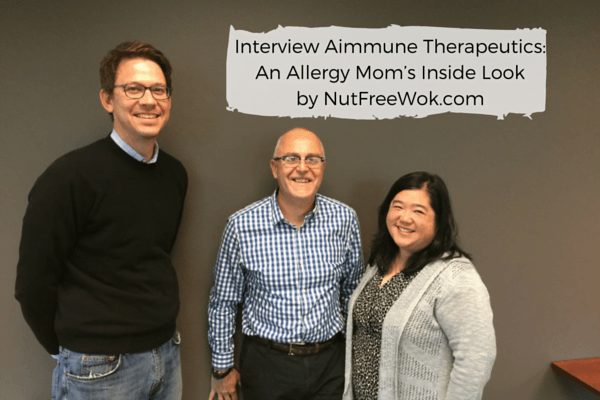
Aimmune’s Beginnings
A food allergy non-profit formerly known as FAI (FAI merged with FAAN and is now known as FARE) organized a research retreat in April 2011 at Harvard Medical School with approximately 40 prominent researchers, senior government officials, industry leaders, and food allergy advocates. All the attendees worked together on a research strategy known as “Roadmap to a Cure.”
They shared their ideas, research, and concerns about food allergy treatments. They concluded that in order for immunotherapy to be safe, it was necessary to create a standardized product by a pharmaceutical company in order to achieve reproducible results (with less variability in the experimental conditions). However, none of the existing pharmaceutical companies were interested so it became necessary to form a new company.
The leading researchers agreed to share their data and protocols with the goal of “making something we can do.” FARE partially funded and assisted in the launch of Allergen Research Corporation which is now known as Aimmune Therapeutics. Five years later Aimmune is now enrolling subjects into their phase III clinical trial study due to the vision and ongoing collaboration of the attendees, support of private investors, the dedication of the researchers, and the families involved with the clinical trials.
What is Aimmune Developing?
Aimmune is developing products and protocols for Characterized Oral Desensitization Oral Immunotherapy (CODIT), a special form of oral immunotherapy (OIT) that guarantees the size of doses with a protocol on how to treat patients that is based on real patient data. Their very first product for peanut desensitization is called AR101, it’s a protocol with capsules with premeasured doses of peanut flour which an allergist will work with a patient to take at home daily, along with updosing at the allergist’s office.
Their phase II protocol is based on research and data licensed from Dr. Wesley Burks, Dr. Stacie Jones, and Dr. Kari Nadeau. I love that these amazing researchers are willing to share their work so that others may build upon them for the greater good of those living with food allergies. Aimmune continues to work with them along with many other academic researchers and practicing allergists.
As Aimmune refines the protocol, they are making plans so that the CODIT protocol could be used in an allergy practice near you. They will provide special training and support services for allergists who want to add the program to their practice. They plan to create training materials to use with patients and their families as well as a helpline.
Aimmune has completed their phase III clinical trial studies for peanut called ARC001 and ARC002 (placebo crossover study) to test for safety and efficacy. They are enrolling subjects ages 4-55 into their phase III PALISADE trial with more patients and more locations in order to reproduce the results of the phase II trial results on a larger scale and they are approximately two years away from filing for FDA approval.
AR101, the Capsules with Pre-Measured Peanut Flour
The capsules contain peanut flour and in order to make a consistent supply of capsules that will lead to reproducible immunotherapy results, it is essential to take many precautions with the peanut flour, which is considered a raw ingredient. Peanuts are generally known to be at risk of natural pathogens such as mold which produce toxic by-products, they check that the flour is clean, free of pathogens, and has a stable shelf-life.
The manufacturing process will streamline the production of large quantities of doses for use in allergists’ offices as well as food allergy research. They also check for the consistency and accuracy of the peanut flour doses by testing for the amounts of specific key peanut proteins, Ara h1, h2, and h6, to ensure that the peanut doses have the right amounts of proteins to induce desensitization to the proteins most associated with anaphylaxis.
One of Aimmune’s goals is to create a safe desensitization protocol which would reduce the risk of severe adverse reactions. They are learning about who would do well with CODIT so that allergists can use this treatment with their patients and who would need a referral for additional care.
A Sneak Peek at CODIT
Patients typically begin the protocol during an in-office visit with their allergist and consume a dose as small as .5 mg dose and are given additional doses of small amounts of peanut protein. At the end of the visit, they will go home with a starting dose of 3 mg (which may vary according to the needs of each patient) of peanut protein to ingest daily at home for 2 weeks.
Usually the contents of the capsules are mixed into a serving of pudding or applesauce and preferably taken with a meal. Patients must stay cool and calm for a period of time before and after the dose as a precaution and work with their allergist to adjust doses temporarily when they’re sick with a cold or fever. Patients return to their allergist’s office every two weeks to increase their dose (updose). After 11 visits to their allergist’s office, most patients will be desensitized to 300 mg of peanut protein approximately 1.25 peanuts in about 5-6 months and will continue ingesting a 300 mg peanut protein dose during a maintenance period.
Dr. Dilly also made an interesting remark about defining a speed limit based on real patient data. It is always possible to go more slowly and stay on the same dose for four weeks or longer as necessary. However, it is imperative not to go faster than updosing every two weeks, hence the protocol is a speed limit to safely desensitize patients. One can desensitize slower than what’s recommended but never faster.
It seems to me that Aimmune also recognizes some of the emotional issues of medication compliance as they are aware of the importance of helping patients to continue taking their doses with support and possibly a helpline. A small maintenance dose of 300 mg is less burdensome to take and lowers the risk of adverse reactions during high pollen count days or when sick, for example.
One benefit of delivering the doses in capsule form is that it reminds patients that the doses are medicine. The peanut flour minimizes the taste, texture, and smell of peanuts in case a patient has an aversion to peanuts. In contrast, using candy such as chocolate coated peanuts to serve an OIT dose might send a mixed message about whether the doses are medicine or treats. If patients have difficulty differentiating or cannot resist the temptation of sweets, there’s a risk of overdosing and accidentally eating too much peanuts. They are working on using child-proof packaging for the future, using blister packaging to prevent accidents.
OIT 2.0
In previous OIT studies, patients were desensitized to maintenance doses which varied between 3-17 peanuts (up to 4 gm of peanut protein). Why stop at just 300 mg peanut protein? Dr. Dilly mentioned that when some patients maintain a daily dose of 300 mg of peanut protein for a certain amount of time, they are able to tolerate up to 15-17x that amount in an oral food challenge. After 12 weeks of maintenance, 90% of Aimmune’s phase II participants were able to tolerate 3-4 peanuts at their final challenge, which is greater than the maintenance dose of ~1.25 peanuts.
The big take home message is that it’s possible for patients who have a maintenance dose of 300 mg to tolerate greater than bite proof amounts of peanut with less emotional and/physical pressure to stay on protocol compared to a larger maintenance dose. A lower dose also reduces the risk of adverse side effects that may occur when one is sick or during high pollen count days.
As they continue to investigate CODIT and AR101, it’s possible that toddlers would have similar sustained effects and benefits with an even lower maintenance dose (as low as 200 mg). I love that they are looking for ways to refine their protocol with continued research in order to optimize outcomes while minimizing risks and obstacles.
How Will Aimmune Use the Biomarker Data?
How do researchers and allergists know who will or will not be able to handle increasing the dose amounts during desensitization? How do they know when a patient is desensitized to their allergen and how does one know to stop treatment? Aimmune researchers collect biomarker data which will help to answer these kinds of questions and more.
They track patients’ skin prick tests and blood tests over time and consider the ratio of peanut specific IgE vs. total IgE, they want to see an increase in IgG4 (which “inhibit or competes with the action of IgE antibodies” – see related reading linked below), a decrease in allergen specific IgE and analyze the activity of T cells and basophils.
In other words, they’re looking for the “fingerprint of desensitization” to create a patient management system for allergists so that there is an objective reading of a patient’s status at the beginning, middle, and end of treatment. They want to give the local allergist office the most resources in order to desensitize patients safely.
Aimmune had shared a press release in April 2016 about how their biomarker data has the potential to predict the response to treatment with AR101. It seems that patients with peanut specific IgE greater than 100 kUA/l had an overall success rate of 61% compared to 100% for those with peanut specific IgE equal or less than 100 kUA/l (no withdrawals, no adverse events, no epinephrine use, and all met primary endpoints). One’s baseline peanut specific IgE could be a very useful biomarker predictor and continued research is necessary to provide the local allergist with more information on how to implement OIT safely for their patients.
Related reading: Aimmune Therapeutics Presents Data on Biomarkers and Potential to Predict Response to Peanut Allergy Treatment With AR101
How Will People Know if CODIT is Right for Them?
In addition to what we can learn from the biomarker data, I think it’s important to take into consideration that we are also subjective human beings with a wide range of emotions and personal circumstances which could help or hinder how well we do with treatment. Dr. Dilly brought up some questions to consider before starting any form of allergy treatment. Are we willing to make an investment of time? The CODIT treatment involves about 11 office visits to see an allergist and daily dosing at home, which involves staying calm and cool for a period of time before and after dosing. Are the doctor and patient able to form a partnership of mutual respect over a period of approximately 6 months for the training, learning, and commitment that will be necessary?
What About CODIT Side Effects and Adverse Reactions?
One of the unknowns about OIT in general is the risk of discovering digestive complications such as eosinophilic esophagitis (EoE) or other gut related allergic inflammations. Dr. Dilly told me that 90% of side effects are considered mild, such as minor mouth tingling, hives, or gut pain around the time of dosing. These side effects happen early on in treatment (first 3-4 doses) and become easier with time, usually resolving within 4-6 weeks for about 80% of patients.
However, approximately 20% of patients cannot tolerate OIT and some early warning signs might include a tummy ache in the background all the time rather than only around dosing time. Those with a high baseline peanut specific IgE might experience more symptoms. The good news is that people with GI symptoms can recover quickly if they stop therapy early on and this issue underscores the importance of having clear instructions to know when to stop rather than trying to push through.
Some people will breeze through CODIT safely and live with a better quality of life without fear of cross-contact and accidental exposure, which is what we all want. Sometimes it might not be as easy for others and it’s important to be objective with ourselves and our doctors and know that it’s okay to stop and regroup. We are so fortunate to know that in addition to OIT, there are other treatments in development, such as traditional Chinese medicine (TCM) via Dr. Li’s research at Mt. Sinai and epicutaneous immunotherapy (EPIT) via DBVT’s Viaskin products.
What’s In Store for the Future?
The FDA granted Aimmune’s AR101 breakthrough status. We currently do not have any food allergy treatment that is considered safe with reproducible results and Aimmune’s AR101 is considered a “breakthrough.” They are working with the FDA in real time to answer questions and address any concerns regarding safety and efficacy. Premeasured doses that are consistent and reliable will eliminate dosing variability. Partnerships with the academic community and studies with a larger group of patients will help advance food allergy research. They are hoping that by the end of 2017, they will have all the data needed to move forward with FDA approval, licensing, and manufacturing.
Your Questions Answered
I am so grateful to Aimmune for spending time with me so that we can understand what they are doing and what is ahead. I polled readers, friends, and members of a Facebook group for their most pressing questions. Thank you for your contributions to this interview and special thanks to the friends who previewed this interview and provided feedback.
Q1: Do the capsules contain whole or partial proteins?
Many wanted to know if the peanut flour in the Aimmune capsules contain all of the peanut proteins normally found in whole peanuts or not? The short answer is yes, all the proteins are present and aren’t altered, modified, or extracted in any way. They use peanuts grown in Georgia that are made into peanut flour. While all peanut proteins are present, they test AR101 for specific key proteins, Ara h1, h2, & h6, which are most correlated with allergic response and severity. The testing ensures that every lot is consistent for quality assurance purposes.
Q2: Why turn food into a drug? Why not use food for OIT?
It is necessary to create a pharmaceutical product because the FDA wants to see reproducible results that is simply not possible with regular food (for example, peanut sizes vary). Sometimes peanut containing foods are recalled due to bacterial contamination and food that is used as medicine require extra precautions. The resulting product must also be stable in the long term since peanuts have a known risk of aflatoxin, a poisonous chemical produced by certain molds which can be found in peanuts, the peanuts cannot be grown organically. AR101 peanuts are grown with agriculture good manufacturing practices (GMP) with specific guidelines on the use of chemicals, and they are handled in a very controlled environment then produced with drug GMP for safety.
Q3: What about CODIT for other allergens?
Aimmune is working on CODIT for egg. Dr. Dilly mentioned that there are two kinds of egg allergies which I found interesting and relevant. Some people have an allergy to raw eggs that is short lived because those individuals outgrow an egg allergy over time or who might respond to a baked egg desensitization protocol.
In contrast, there are those who have a more severe egg allergy and who display sensitivity to baked egg, processed egg, and traces of eggs via cross-contact. They are less likely to outgrow their egg allergy and might potentially benefit from an allergen therapy. They are working on a CODIT solution for those who with a severe egg allergy.
I was also happy to hear about the possibility of tree nut CODIT. Since there are many tree nuts, they are considering a single formulation for tree nuts in the future.
Concluding Thoughts
Aimmune’s AR101 phase III clinical trial study PALISADE is now enrolling at food allergy research centers and allergists’ offices in many locations. You can learn more about the trials by looking up the study record on clinicaltrials.gov, reading the press releases published on Aimmune’s website, or visiting www.palisadetrial.com. If you have specific questions, please discuss them with your allergist.
Aimmune is on the brink of matching the technical capability of turning a food into a drug with OIT protocols like never before. Manufactured allergen doses will eliminate variability and streamline food allergy research in the future. It’s so exciting for me to imagine what they will learn in the next two years, how they will present their findings to the FDA, and if this product is approved in a few years, allergists everywhere will receive specialized training and on-going support so that they can offer treatment to their patients that is optimized for safety and benefit. We all await the results from the PALISADE trial with great interest and wish all the current participants the best of luck.
Many thanks to the attendees of the very first food allergy research retreat for their vision and collaboration, all of the brave patients and their families who have given of themselves and their time to participate in the various phases of Aimmune’s trials, and all of the researchers for your contributions to advancing a food allergy treatment. Thank you Dr. Dilly, Dr. Vickery, and Alison for tackling my long list of questions and for meeting with me.
Thanks for reading, please help Nut Free Wok!
The best way to see every post or recipe is to subscribe to Nut Free Wok’s email subscription (be sure to respond to the confirmation email). You will to be notified by email next time I publish another post or recipe and I won’t send you spam or share you email with anyone.
If you enjoyed this post, please use the social media buttons below to share with others. I am on Facebook, Twitter, Pinterest, and Instagram as @nutfreewok and it’s great to chat and interact on social media too.
Disclaimer: Aimmune’s products are still in research and have not been FDA approved yet. I am not a medical professional, this interview is for informational purposes only and has not been reviewed by a medical professional. I clarified any details with Alison by email afterwards as needed, this interview is not sponsored, and all opinions are mine. If you have any medically related questions, please discuss them with your medical care team. If you like this interview, please use the sharing tools below. All rights reserved, copying is strictly prohibited.

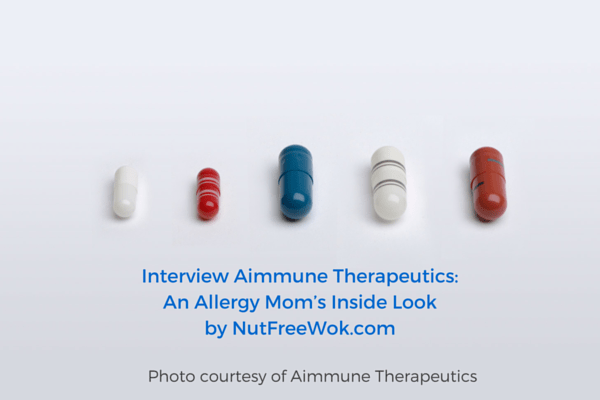
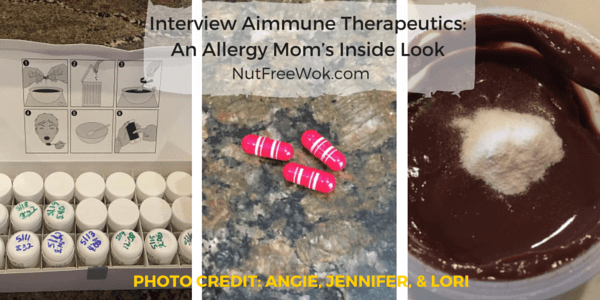

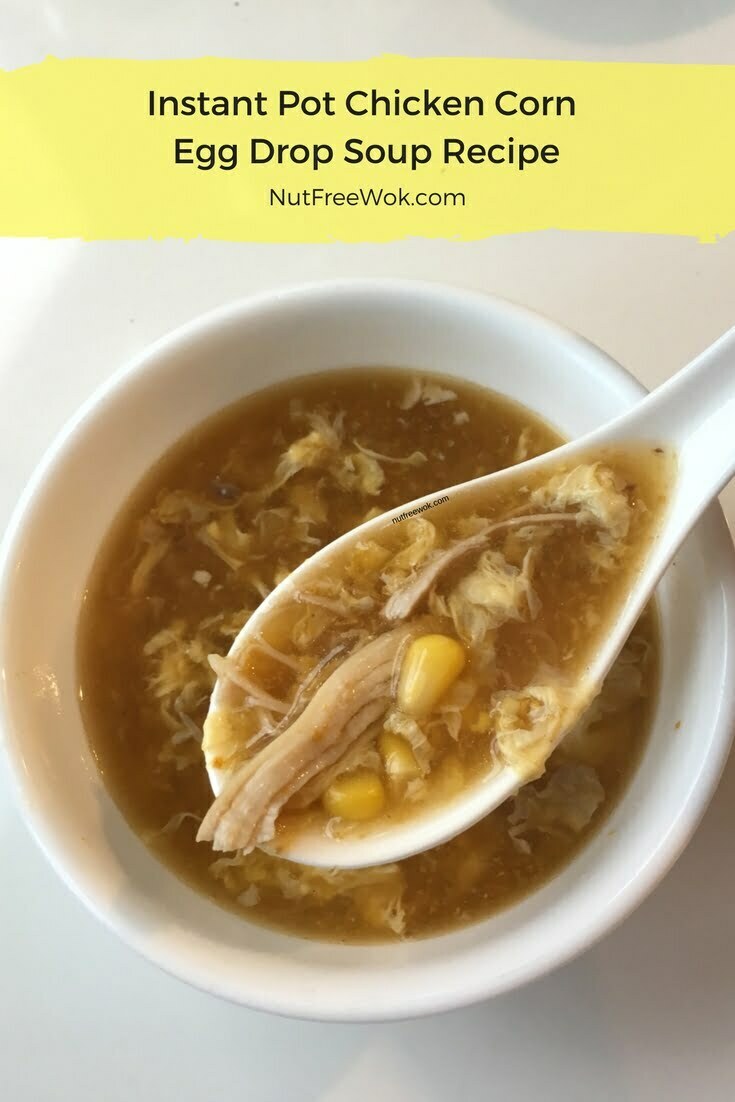
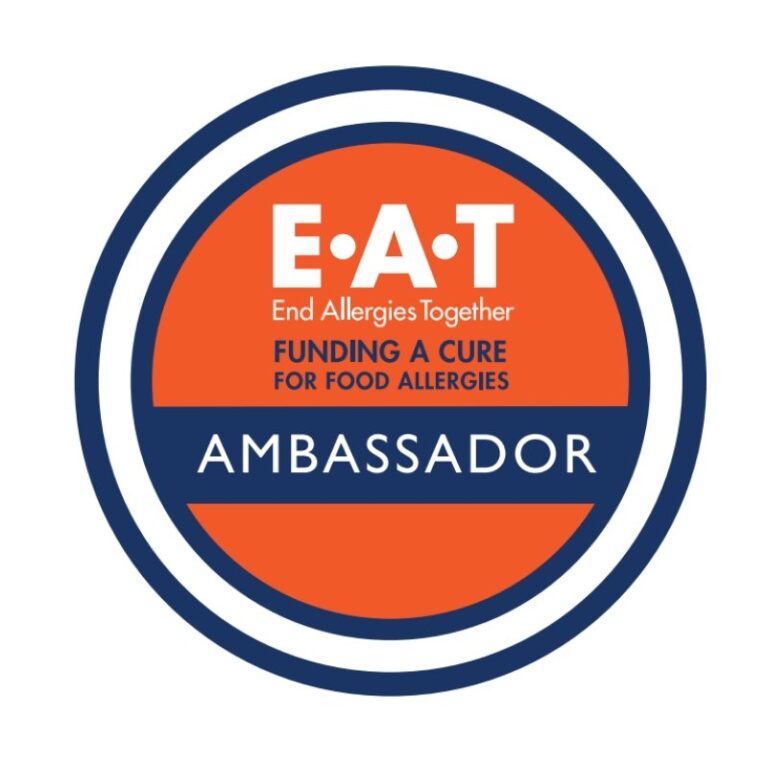
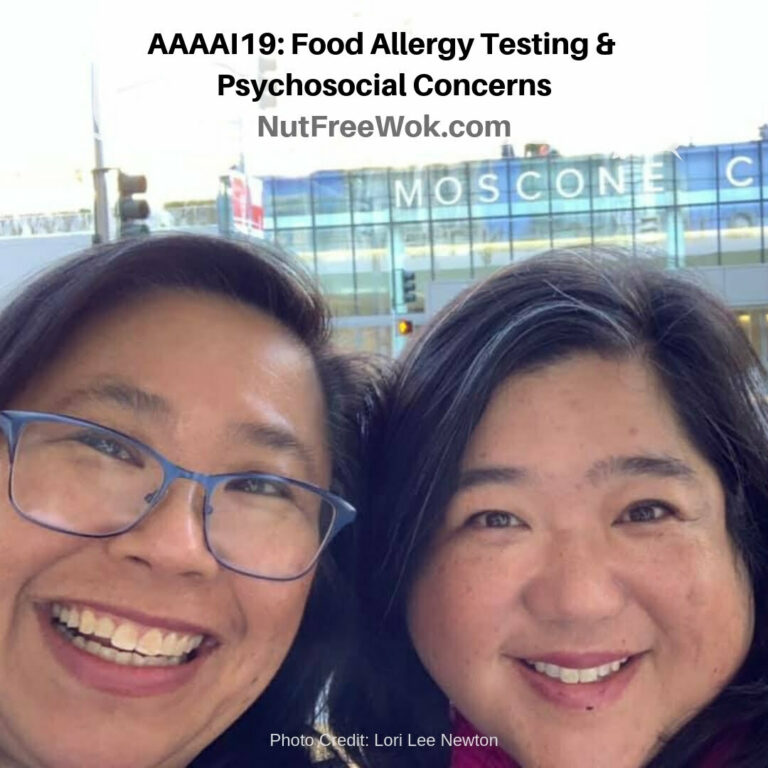

Sharon, thank you for the great article and for all the information!
You’re welcome, Karen! I’m glad you find the information helpful. Please let me know how things go for your kiddo!
Thanks for this informative article. I love that they came to be as part of “Roadmap to a Cure” brainstorming. It’s so wonderful to see OPTIONS for food allergy treatments on the horizon!
Couldn’t agree more. We do need more options, I’m grateful for their systematic investigation and hope that they will be able to bring their product to market in the future.
Sharon, thank you for taking the time to interview and share news about the Aimmune clinical reseach trials. Even though my youngest is paricipating in the current trial, I learned a lot! We drive 170 miles each way to participate, as Oral Immunotherapy is not offered by any doctors in our state.
You’re welcome, BRF! Good luck to your son, I hope he does well in the study and safe travels. You deserve a vacation after the 11 visits, wow!
Thanks for the informative article Sharon! I really hope that the researchers are on to something with the lower maintenance dosing.
If anyone is in a trial or is considering signing up for a trial, especially the PALISADE phase 3, please considering joining our Palisade Trial information and Support Facebook group. We would love to find more members throughout the world that are participating. https://www.facebook.com/groups/palisadetrialinfo/
You’re welcome, Jennifer. I’m so glad to have the opportunity to share all this good info with you and other interested readers. Your group is great, I’m so happy to be in it, thank you!!